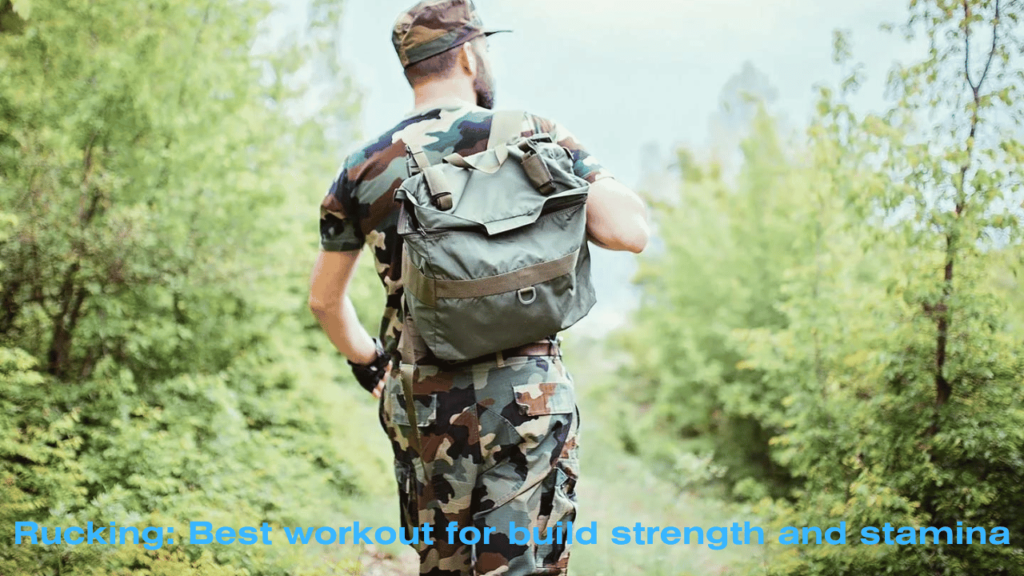For those who enjoy walking as a form of exercise, there’s a simple way to elevate your fitness routine – turn your walk into a ruck. Rucking, which involves walking with weight on your back, has gained popularity as an effective and accessible exercise schedule. In this comprehensive guide, we will explore the benefits of rucking, how to get started, safety considerations, and expert advice to help you make the most of this fitness trend.
– Chapter 1: The Rise of Rucking Exercise:
Its origins in ruck marching, a fundamental skill employed by military forces worldwide. In the US Army, recruits aiming to earn an Expert Infantryman Badge must complete a grueling 12-mile ruck march within three hours while carrying a minimum of 35 pounds of gear. However, rucking for fitness doesn’t require such extreme conditions. Beginners can start with a light weight and slowly increase the weight as they build strength and stamina.
- – Chapter 2: The Health Benefits of Rucking:
One of the key reasons behind the growing popularity of this technique is its suitability for people of all fitness levels. It is a low-impact, full-body exercise that offers numerous health benefits, including:
Cardiovascular improvement
Enhanced muscular strength
Weight loss and calorie burn
Increased endurance
Improved mental well-being
In a small study conducted in September 2019, 10 weeks of weighted walking and resistance training were shown to enhance physical performance in men while reducing perceived exertion. Additionally, research from January 2019 indicated that weighted step training improved lower-limb muscle power and functional ability in older women, potentially prolonging their independence.

- -Chapter 3: The Calorie-Torching Effect of Rucking Workout:
Its an excellent way to burn calories efficiently. When compared to walking without a backpack, a person can burn 30% to 45% more calories while carrying weight. For instance, a 180-pound individual walking at a brisk pace of 15 minutes per mile for 3.7 miles (6 kilometers) while carrying 35 pounds can burn 680 calories, according to the US Army. This calorie burn rate increases with body weight, meaning that a 180-pound person burns calories at a rate equivalent to someone weighing 215 pounds.
Experts like Mark Stephenson, senior director at the Center for Sports Performance and Research at Mass General Brigham, emphasize that the calorie-burning equation is straightforward – more weight leads to more calories expended during any activity.
- -Chapter 4: Rucking and Mental Health
Rucking isn’t just about physical health; it also provides mental well-being benefits. Numerous studies have highlighted the positive effects of spending time in natural environments. Since rucking is typically performed outdoors, it encourages individuals to connect with nature, offering a sense of purpose and tranquility. Being amidst nature can alleviate stress, boost mood, and improve overall mental health.
- -Chapter 5: How to Start:
If you’re intrigued by rucking and want to give it a try, there are essential considerations to ensure a safe and effective start:
Begin gradually: As with any new exercise, start slowly. Commence with an empty backpack and cover a distance you’re already comfortable with.
Gradually add weight: When introducing weight, begin with a light load, approximately 10% of your body weight. This gradual approach helps prevent undue stress on your joints and muscles.
Select proper equipment: Choose a suitable backpack with wide, padded shoulder straps to distribute weight evenly. A waist strap is essential to minimize movement and ensure even weight distribution.
Use appropriate weight: Avoid placing heavy items at the bottom of your backpack, as this can lead to discomfort and instability. Center the load in the middle of your back, near your shoulder blades.
Consider specialized gear: Consider investing in a rucksack designed explicitly for rucking, as they often come equipped with weighted plates or sandbags and pockets for proper weight distribution.
Don’t overlook footwear: Select comfortable shoes and moisture-wicking socks to prevent blisters and ensure a comfortable rucking experience.

- -Chapter 6: Safety Considerations:
While rucking is accessible to most people, it may not be suitable for everyone. Individuals with shoulder issues, tendinitis, or stiffness should exercise caution, as adding weight to a backpack can exacerbate these conditions. It’s crucial to listen to your body; if you experience pain or discomfort, it’s essential to stop and seek medical advice.
- -Chapter 7: Incorporating Rucking into Your Routine:
Fitness experts recommend incorporating rucking into your fitness routine a few times a week rather than making it a daily activity. Combining rucking with lower-body exercises can yield even better results. For example, you can include lunges, squats, and other exercises during your ruck to maximize the benefits.
- -Chapter 8: Workout Benefits:
Rucking workout is a versatile and effective fitness trend that offers numerous physical and mental health benefits. It’s accessible to individuals of various fitness levels and can be tailored to suit your specific goals. Whether you’re looking to burn calories, improve cardiovascular health, or simply enjoy the outdoors, it provides an excellent opportunity to enhance your fitness journey. Remember, safety and gradual progression are key to a successful and enjoyable rucking experience. So, grab your backpack, lace up your shoes, and embark on a journey to better health through rucking.





